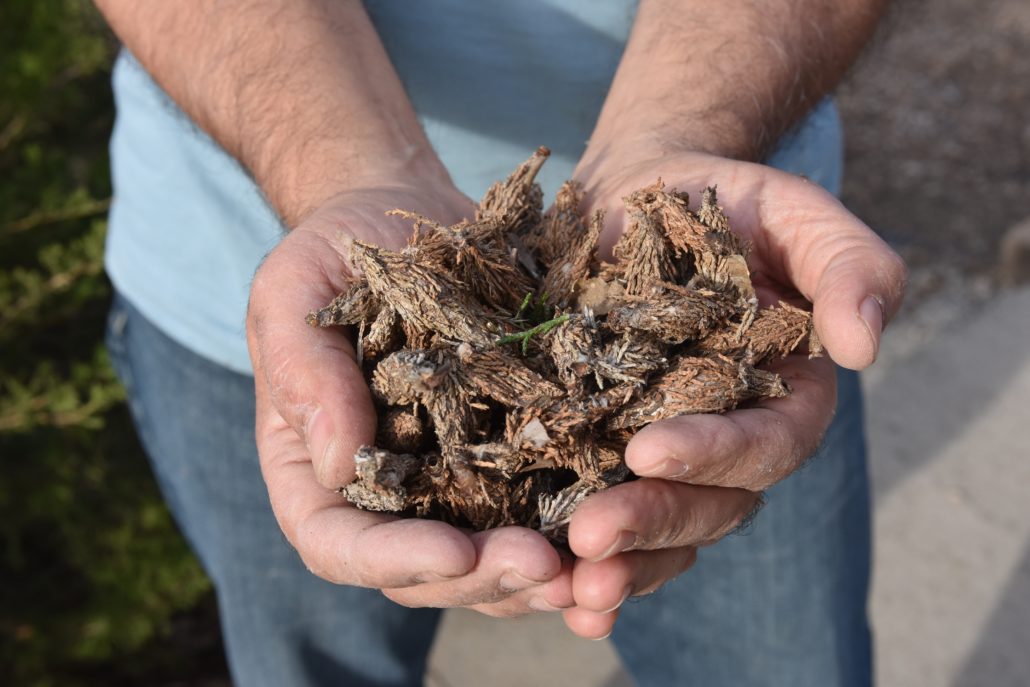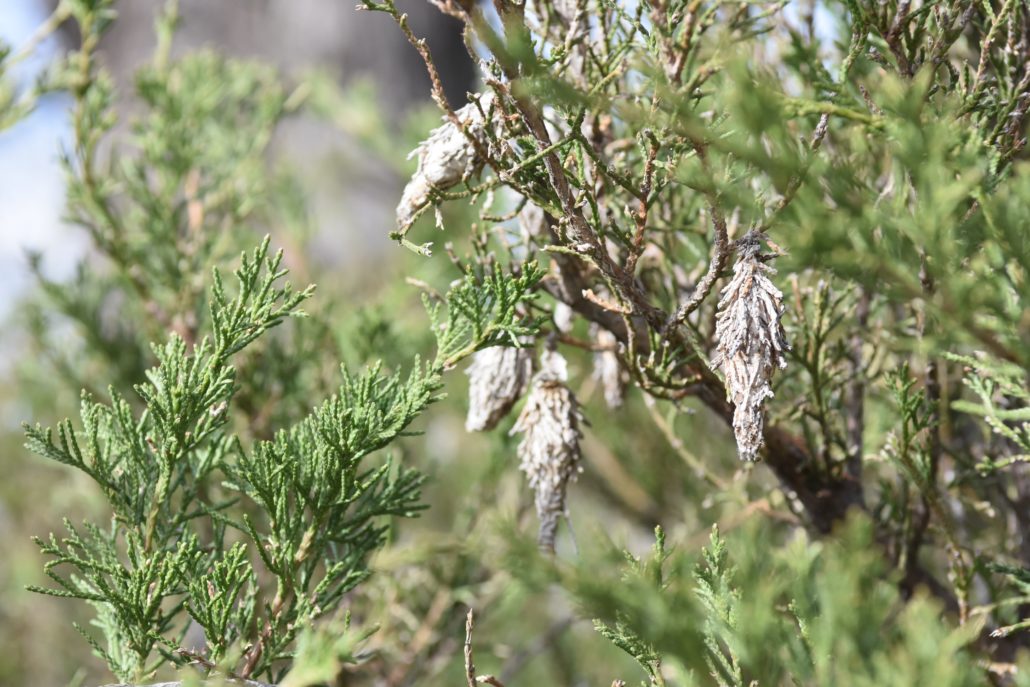The Summer When Bagworms Took Over
 Our family moved into a beautiful new home this past winter. The expansive yard has healthy turf making it an ideal place for our three kids to run, and play, and cause mischief. The mature trees provide shade and allude to the promise of a tire swing and a tree house. The north side of our driveway is lined with evergreen shrubs that, over the past decade, have grown to provide screening from the neighbor’s property.
Our family moved into a beautiful new home this past winter. The expansive yard has healthy turf making it an ideal place for our three kids to run, and play, and cause mischief. The mature trees provide shade and allude to the promise of a tire swing and a tree house. The north side of our driveway is lined with evergreen shrubs that, over the past decade, have grown to provide screening from the neighbor’s property.
Once the dust had settled from our move, we noticed that these shrubs didn’t look as vibrant as they should. A closer look we revealed the reason why – they were completely overrun with bagworms!
After spending hours upon hours hand-picking and disposing of literally thousands of over-wintering bagworms, I thought I had taken care of them all. The next day I went out to admire the fruit of my labor. As I sifted through the branches I discovered that I had missed another 500 worms, at least. I’m sure this goes without saying, but this is not an ideal way to spend a weekend.
In lieu of this experience, and assuming I’m not the only person this has happened to, I thought we’d cover the bagworm basics so YOU can avoid a similar fate.
The bagworms must go.
Bagworms attack and devour trees and shrubs such as evergreen trees, junipers, arborvitae, rose bushes, cypress, and spruce. The trouble with bagworms is that they move quickly when they are young, eating and potentially killing trees and shrubs within a matter of days. Once the worms have eaten one tree, they’ll continue to move from one plant to another, especially plants touching one another.
Be on the lookout.
Keep your eyes peeled for signs of feeding damage, as well as cone-shaped bags. The bags are made of partially consumed foliage which allows them to blend in well with their environment. Bag building starts early in the summer, depending on the weather, and can be difficult to spot. As the season continues the bags will become more visible, growing from less than ¼ inch to 1 ½ inches in length.

Save your trees and shrubs from bagworms!
There is never just one bagworm, so if you’ve noticed them in or around your yard, you need to act. If the larvae are actively feeding, then a chemical treatment will take care of the problem. If you wait too long (like I did) and the insects are pupating inside their bags, it is too late to use pesticides. The only way to get rid of the problem at this point is to remove the bags by hand and destroy them, either by smashing them (gross) or putting them in sealed bags where they cannot escape.
Our team of experts is here to help! We will help you scout your property for bagworms, correctly identify any issues, and provide treatment solutions. Don’t wait until it’s too late – contact us today!
